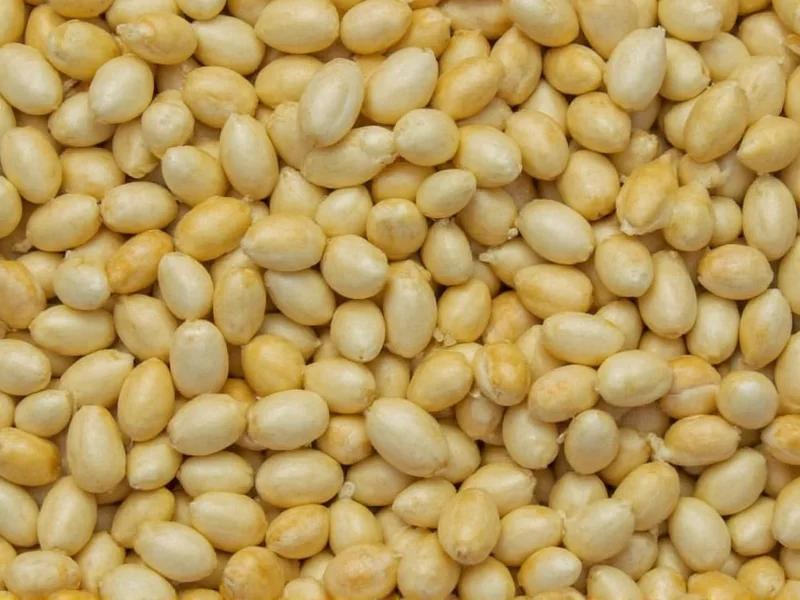Sesame (Sesamum indicum) stands as one of the oldest oilseed crops known to humanity, with archaeological evidence tracing its cultivation to ancient Mesopotamia and the Indus Valley civilization. This resilient plant thrives in tropical and subtropical regions worldwide, particularly in countries like Sudan, Myanmar, India, and Tanzania, which collectively produce over 6 million metric tons annually according to FAO data.
Botanical Characteristics of Sesamum indicum
The sesame plant typically grows 50-100 cm tall with opposite leaves ranging from 4-14 cm in length. Its tubular flowers appear in shades of white, blue, or purple, blooming for only a single day. What makes Sesamum indicum particularly fascinating is its unique seed capsule structure. These capsules split open automatically when ripe—a process called dehiscence—releasing the precious seeds within. This natural mechanism, while evolutionarily advantageous, creates harvesting challenges that farmers have addressed through selective breeding of non-dehiscent varieties.
Global Cultivation and Production
Modern sesame farming spans over 90 countries, with production concentrated in specific regions due to the plant's particular growing requirements. The crop prefers well-drained soils and requires 90-120 frost-free days to reach maturity. Unlike many crops, sesame demonstrates remarkable drought tolerance once established, making it suitable for marginal agricultural lands.
| Top Sesame Producing Countries | Annual Production (metric tons) | Primary Growing Regions |
|---|---|---|
| Sudan | 800,000 | Kordofan, Darfur |
| Myanmar | 780,000 | Mandalay, Magway |
| India | 750,000 | Rajasthan, Gujarat |
| Tanzania | 350,000 | Dodoma, Singida |
| Burkina Faso | 300,000 | Centre-Nord, Sahel |
From Flower to Seed: The Sesame Harvesting Process
The journey from sesame flower to consumable seed involves precise timing and technique. Approximately 35-40 days after flowering, the seed capsules begin to mature. Traditional harvesting occurs when about half the capsules have turned brown and started to split. Modern commercial operations often cut plants when 75% of capsules show maturity signs, then stack them to dry completely before threshing.
One of sesame's most remarkable features is its seed color variation. While many associate sesame seeds with their classic ivory-white color, Sesamum indicum actually produces seeds in multiple hues including black, brown, red, and gold. These color variations stem from different polyphenol compounds in the seed coat and correlate with distinct flavor profiles and culinary applications.
Nutritional and Commercial Significance
Sesame seeds contain approximately 50-60% oil, predominantly composed of healthy unsaturated fats. They're also rich in protein (18-25%), dietary fiber, and essential minerals like calcium, iron, and magnesium. The seeds' natural antioxidant sesamol contributes to their exceptional shelf stability compared to other oilseeds.
Commercially, sesame serves multiple purposes beyond direct consumption. The oil finds applications in cooking, cosmetics, and pharmaceuticals. Sesame meal, the byproduct after oil extraction, serves as valuable animal feed. Traditional medicines across Asia and Africa have utilized various parts of the Sesamum indicum plant for centuries, though modern scientific validation of these uses remains limited.
Related Sesame Species and Varieties
While Sesamum indicum represents the primary commercial species, the genus includes approximately 20 other species. Some wild relatives like Sesamum alatum and Sesamum angustifolium grow across Africa and show potential for crop improvement through breeding programs. These wild varieties often demonstrate greater disease resistance and environmental adaptability than cultivated sesame.
Modern agricultural research focuses on developing improved Sesamum indicum varieties with characteristics such as:
- Non-dehiscent seed capsules for easier harvesting
- Enhanced resistance to fungal diseases like phyllody
- Uniform ripening patterns
- Higher oil content and improved fatty acid profiles
Historical Significance of Sesame Cultivation
Archaeological evidence from the Indus Valley civilization (3500-3000 BCE) reveals sesame oil extraction techniques, while ancient Egyptian records document its use in baking and medicine. The famous phrase "open sesame" from Middle Eastern folklore likely references the plant's distinctive seed capsule that automatically splits when ripe. Throughout history, sesame has maintained cultural significance across multiple civilizations, appearing in religious ceremonies, traditional medicines, and culinary traditions worldwide.
Frequently Asked Questions
What is the scientific name of the sesame plant?
The scientific name of the sesame plant is Sesamum indicum, a member of the Pedaliaceae family. This annual flowering plant produces the edible sesame seeds used worldwide in culinary applications.
How long does it take for sesame plants to produce seeds?
Sesame plants typically require 90-120 days from planting to harvest, depending on climate and variety. The seeds mature approximately 35-40 days after flowering occurs, with the seed capsules changing color as they ripen.
Can you grow sesame plants in a home garden?
Yes, sesame plants can be grown in home gardens in warm climates with at least 120 frost-free days. They require full sun, well-drained soil, and regular watering during establishment. Gardeners should note that sesame grows quite tall (up to 3 feet) and the seed capsules will naturally split open when ripe, requiring careful harvesting timing.
Why do sesame seed capsules split open when ripe?
Sesame seed capsules split open through a process called dehiscence, an evolutionary adaptation that allows seeds to disperse naturally. This characteristic, while beneficial in the wild, creates harvesting challenges for farmers, which is why many modern commercial varieties have been bred to be non-dehiscent (not splitting open automatically).
What's the difference between white and black sesame seeds?
White and black sesame seeds come from the same Sesamum indicum plant but represent different varieties. Black sesame seeds retain their seed coat, giving them a stronger, nuttier flavor and higher antioxidant content. White sesame seeds have had their seed coat removed, resulting in a milder flavor preferred for certain culinary applications like tahini and baked goods.











 浙公网安备
33010002000092号
浙公网安备
33010002000092号 浙B2-20120091-4
浙B2-20120091-4